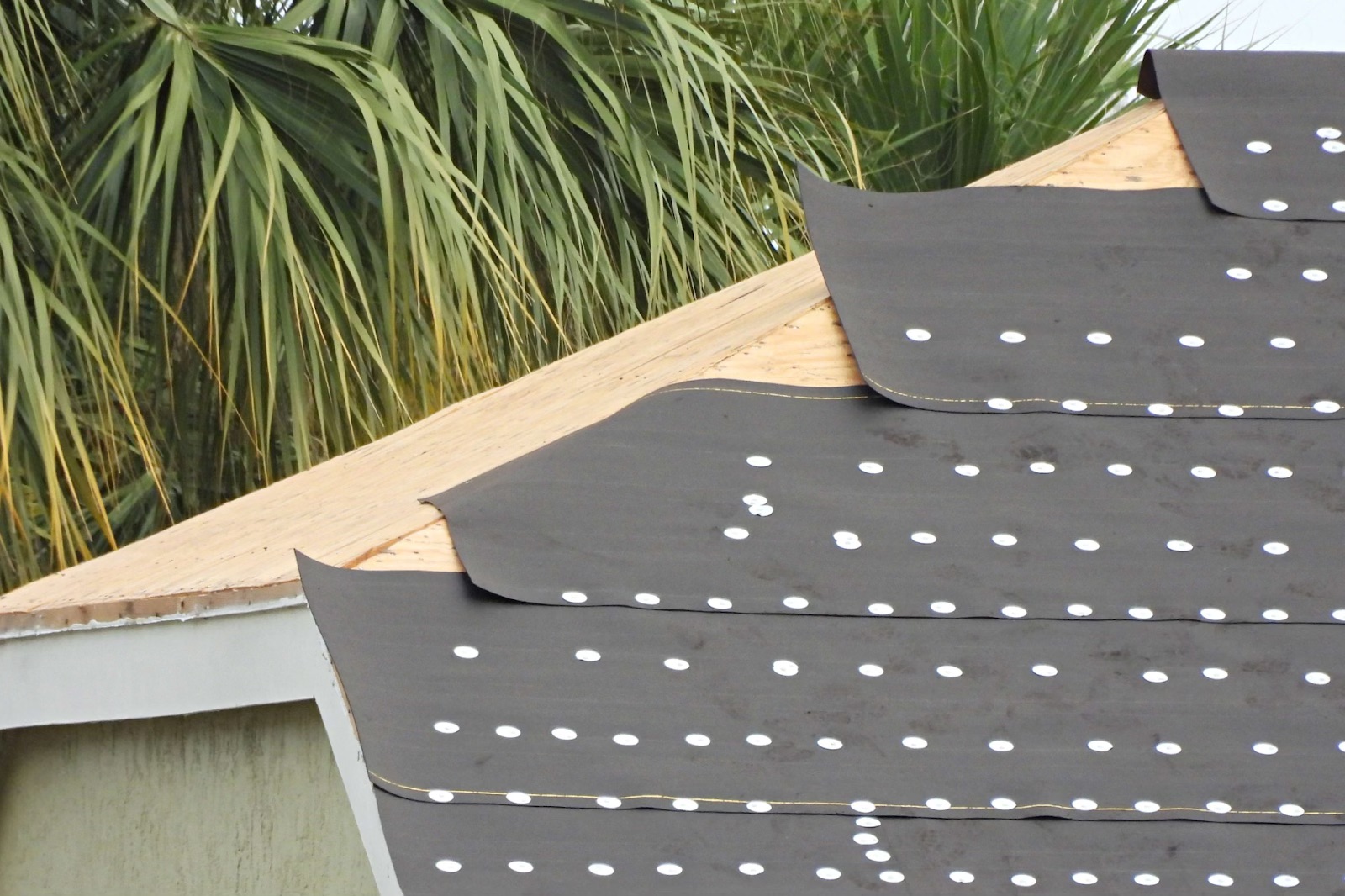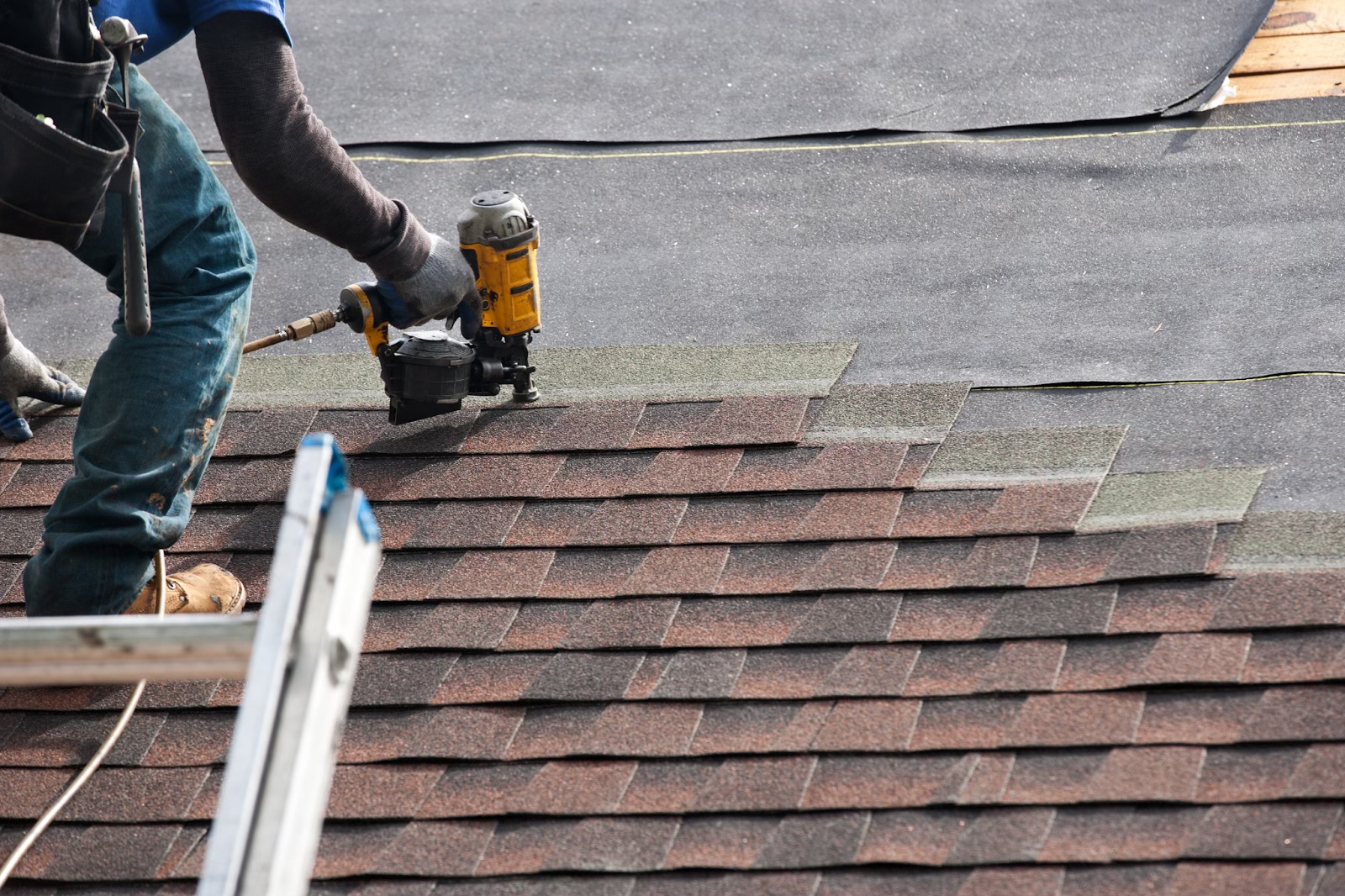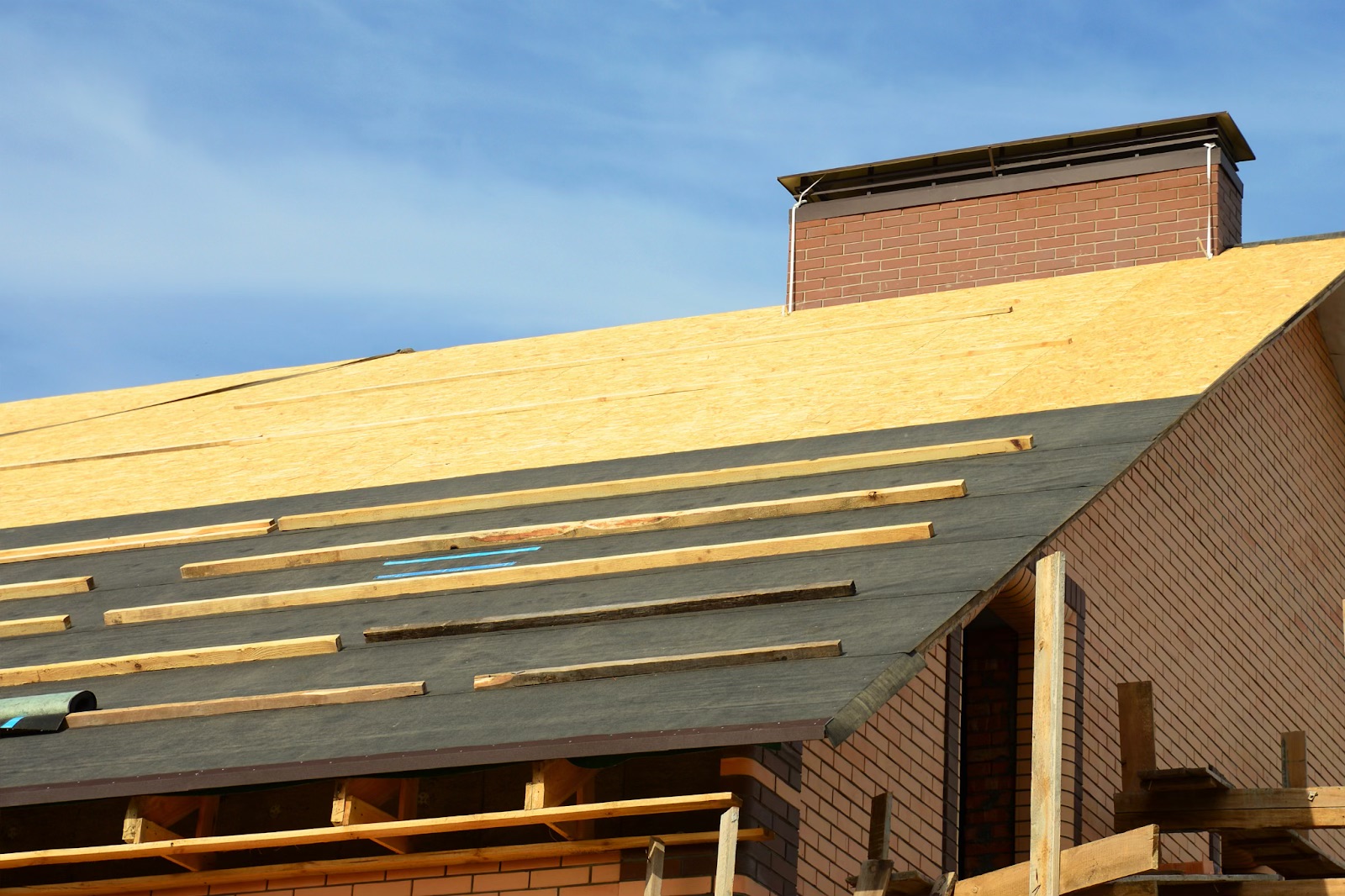05/28/2025
Choosing the Right Roof Underlayment Type

When it comes to protecting your home from the elements, the roof underlayment plays a crucial but often overlooked role. This essential layer sits between your roof deck and the visible roofing materials, providing a secondary barrier against moisture, improving fire resistance, and enhancing your roof’s overall performance. Choosing the right roof underlayment type is a decision that impacts not only the immediate installation but also the long-term durability and performance of your entire roofing system.
In this comprehensive guide, we’ll explore the various types of roof underlayment available, their specific applications, advantages, and limitations to help you make an informed decision for your roofing project. Whether you’re building a new home or replacing an existing roof, understanding your underlayment options is essential for maximizing protection and value.
What Is Roof Underlayment and Why Is It Critical?
Roof underlayment serves as a critical secondary water barrier that protects your home when the primary roofing material (like shingles or metal panels) fails or becomes compromised. This protective layer prevents water intrusion during construction before the final roofing material is installed and provides ongoing protection throughout the life of your roof.
According to the National Roofing Contractors Association (NRCA), proper underlayment selection can extend roof life by up to 25% by preventing moisture damage to the roof deck. This critical component also improves fire ratings, provides an additional layer of insulation, and creates a more uniform surface for the installation of roofing materials.
The underlayment is your roof’s unsung hero – while you never see it, it’s working 24/7 to protect your home from water damage and extend the life of your entire roofing system.
Beyond water protection, underlayment serves several essential functions:
- Creates a separation layer between the roof deck and roofing materials to prevent chemical reactions
- Provides temporary weather protection during construction
- Improves fire resistance ratings for the entire roof assembly
- Helps maintain manufacturer warranties for roofing materials
- Enhances wind resistance by creating a more secure attachment system
For homeowners in Fort Worth and surrounding areas, where weather can range from intense summer heat to severe storms, selecting the appropriate roofing contractor Arlington TX who understands local conditions and proper underlayment selection is essential for long-term roof performance.
The Three Main Types of Roof Underlayment
When planning your roofing project, understanding the three primary types of underlayment will help you make an informed decision based on your specific needs, climate conditions, and budget considerations.
Traditional Felt Underlayment: Applications and Limitations
Felt underlayment, also known as tar paper or asphalt-saturated felt, has been the standard in the roofing industry for decades. Typically available in #15 and #30 weights (with #30 being thicker and more durable), felt underlayment is made by saturating paper or fiberglass mat with asphalt.
Traditional felt offers several advantages:
- Generally more affordable than synthetic alternatives
- Good short-term water resistance
- Widely available and familiar to most roofing contractors
- Compatible with most roofing materials
However, felt underlayment comes with notable limitations:
- Can absorb moisture and wrinkle over time
- Tears relatively easily during installation
- Degrades when exposed to UV rays for extended periods
- Heavier and more difficult to handle than synthetic options
- Less dimensionally stable with temperature fluctuations
For homeowners in areas with moderate climate conditions who are working with tighter budgets, felt underlayment may still be a viable option, especially for shorter-term solutions. However, for premium protection, particularly in regions prone to severe weather, consulting with a qualified roofing contractor Southlake TX about more advanced options is recommended.
Synthetic Underlayment: The Modern Alternative
Synthetic underlayment has rapidly gained popularity since its introduction in the early 2000s. Made from polymers like polyethylene or polypropylene, these underlayments offer significant improvements over traditional felt.
Key advantages of synthetic underlayment include:
- Superior tear resistance and durability during installation
- Lightweight (typically 2-4 times lighter than felt) for easier handling
- Excellent water resistance with higher moisture vapor transmission rates
- UV stability allowing longer exposure times during construction (typically 2-6 months)
- Consistent thickness and quality throughout the material
- Resistance to fungal growth and chemical exposure
- Less prone to wrinkling and buckling
According to a 2023 industry report, synthetic underlayment now accounts for over 60% of new roof installations in the United States, with that percentage continuing to rise annually. While synthetic options typically cost 2-3 times more than felt underlayment, many residential roof inspection Fort Worth TX professionals recommend them for their superior performance and longer service life.
Rubberized Asphalt Underlayment: Maximum Protection
For maximum protection, especially in vulnerable roof areas or severe climate regions, rubberized asphalt underlayment provides the highest level of water resistance. This premium option consists of a rubberized asphalt layer bonded to a polyethylene film or fiberglass reinforcement.
Rubberized asphalt underlayment offers exceptional benefits:
- Self-sealing around nails and fasteners for watertight performance
- Adheres directly to the roof deck creating a fully waterproof membrane
- Excellent performance in extreme temperature conditions
- Superior protection in high-risk areas like valleys, eaves, and penetrations
- Ideal for low-slope roof sections (2:12 to 4:12 pitch)
- Enhanced ice dam protection in cold climates
The primary drawback of rubberized asphalt underlayment is cost – typically 5-10 times more expensive than traditional felt. For this reason, many homeowners opt to use it selectively in vulnerable areas while using synthetic underlayment for the main roof surface. For expert guidance on this approach, consulting with a roofing contractor Bedford TX who specializes in custom solutions can help optimize protection while managing costs.
Comparing Underlayment Types: Comprehensive Analysis

Making an informed decision requires understanding how each underlayment type performs across various criteria important to your specific situation.
Performance Comparison in Different Weather Conditions
Climate considerations should heavily influence your underlayment selection:
- Hot Climates (like Texas summers): Synthetic underlayments excel in high temperatures, maintaining dimensional stability without softening or degrading. Some premium synthetics include reflective surfaces that can reduce attic temperatures by up to 15°F, improving energy efficiency. Traditional felt can become brittle and deteriorate more quickly in sustained high temperatures.
- Cold Climates and Ice Dam Concerns: Rubberized asphalt underlayment is the gold standard for ice dam protection, with self-sealing properties that prevent water infiltration from ice damming. The International Building Code (IBC) requires enhanced underlayment protection in regions where the average January temperature is 25°F or lower. Many commercial roof inspection Fort Worth TX professionals recommend rubberized asphalt underlayment at least 24 inches beyond the interior wall line in cold climate regions.
- High Wind Areas: Synthetic underlayments typically offer superior wind resistance, with some products rated for winds up to 110 mph. Their improved fastening methods and resistance to tearing make them ideal for wind-prone regions. For areas susceptible to hurricanes or severe storms, specialized high-wind underlayments with enhanced attachment systems are available.
- High Rainfall Regions: Both synthetic and rubberized asphalt underlayments provide excellent rain protection. Synthetic options offer good water shedding capabilities, while rubberized asphalt provides complete waterproofing. Traditional felt can be adequate in moderate rainfall areas but may be insufficient for regions with sustained heavy precipitation.
Cost Analysis: Initial Investment vs. Long-term Value
Understanding the total cost of ownership helps put the initial price differences in perspective:
- Initial Material Costs (per 10 squares/1,000 sq ft):
- Traditional Felt (#15): $100-$150
- Traditional Felt (#30): $150-$250
- Synthetic Underlayment: $200-$500
- Rubberized Asphalt: $500-$1,000
- Installation Costs: Synthetic underlayment can reduce labor costs by 15-20% compared to felt due to its lighter weight, larger roll sizes, and easier handling. Rubberized asphalt typically requires more labor for proper installation, potentially increasing installation costs by 25-40%.
- Long-term Value: A 2024 study by the Roofing Industry Alliance for Progress found that homes with synthetic or rubberized asphalt underlayment experienced 70% fewer leak-related repairs over a 20-year period compared to those with traditional felt. This translates to significant savings in emergency roofing services Fort Worth TX and repair costs over the life of the roof.
Installation Complexity and Requirements
Each underlayment type comes with specific installation considerations:
Traditional Felt:
- Requires more fasteners (typically spaced 6-8 inches apart)
- More susceptible to tearing during installation
- Limited exposure time before final roofing (typically 14-30 days maximum)
- Requires careful handling in windy conditions
- Higher risk of wrinkling if exposed to moisture
Synthetic Underlayment:
- Fewer fasteners required (typically 12-18 inches apart)
- More forgiving during installation with higher tear resistance
- Extended exposure time (60-180 days depending on product)
- Special attention needed for proper fastening pattern
- Some products require specific fastener types
Rubberized Asphalt:
- Self-adhering installation requires clean, primed deck surface
- Temperature-sensitive application (typically 40°F and rising)
- Requires careful handling to prevent material from sticking to itself
- Precision cutting around penetrations and details
- May require mechanical fastening on steeper slopes
Professional installation by experienced roofing contractor Dallas TX specialists is particularly important for synthetic and rubberized asphalt underlayments to ensure proper performance and maintain manufacturer warranties.
How to Select the Right Underlayment for Your Specific Roof

The ideal underlayment choice depends on multiple factors specific to your roofing project.
Climate and Weather Considerations
Your local climate should be a primary factor in underlayment selection:
For the Fort Worth area and North Texas region, where summers bring intense heat and periodic severe storms, synthetic underlayment provides an excellent balance of heat resistance, durability, and water protection. In areas prone to hail damage, the additional puncture resistance of premium synthetic underlayments can provide added protection during the vulnerable period between storms and roof repairs.
For homes in low-lying areas or properties that have experienced previous water infiltration issues, selective use of rubberized asphalt underlayment in vulnerable areas combined with synthetic underlayment for the main roof surface offers optimal protection. This approach is particularly recommended by commercial roof repair Fort Worth TX specialists for buildings with complex roof designs.
Roof Pitch and Design Factors
The slope and complexity of your roof significantly impact underlayment requirements:
- Low-Slope Roofs (2:12 to 4:12 pitch): Most roofing material manufacturers require enhanced underlayment protection for low-slope applications. Rubberized asphalt underlayment is typically recommended for these applications, as it provides the waterproofing necessary when water flows more slowly off the roof.
- Standard-Slope Roofs (4:12 to 9:12 pitch): All three underlayment types can perform adequately on standard slopes, though synthetic options offer the best balance of performance and value for most applications.
- Steep-Slope Roofs (greater than 9:12 pitch): On steep slopes, the primary concern becomes underlayment that will stay securely in place during installation. Premium synthetic underlayments with enhanced grip surfaces or mechanical fastening systems are typically recommended.
- Complex Roof Designs: Roofs with multiple valleys, dormers, skylights, or other penetrations benefit from a hybrid approach – using rubberized asphalt in high-risk areas and synthetic underlayment for the main roof surface. This strategy is often employed by commercial roof replacement Fort Worth TX professionals when working on architecturally complex buildings.
Compatibility with Roofing Materials
Different roofing materials may require specific underlayment considerations:
- Asphalt Shingles: All three underlayment types are compatible with asphalt shingles. However, some premium shingle manufacturers specify synthetic underlayment to maintain extended warranties.
- Metal Roofing: Synthetic underlayment is generally preferred for metal roofing applications due to its higher temperature resistance and moisture vapor transmission rates. Some metal roofing systems require specialized high-temperature underlayments.
- Tile and Slate: These heavy roofing materials typically require high-performance underlayment with enhanced tear resistance. Double-layer underlayment systems are common, with many roofing contractor North Richland Hills TX professionals recommending a base layer of synthetic underlayment topped with a layer of rubberized asphalt in valleys and perimeters.
- Wood Shakes and Shingles: These traditional materials typically require specialized breathable underlayment systems that allow the wood to properly dry while still providing water protection. Specific synthetic underlayments designed for wood roofing are available.
Building Codes and Warranty Implications
Understanding regulatory requirements and warranty considerations is essential when selecting underlayment.
The International Building Code (IBC) and local building codes establish minimum requirements for roof underlayment based on roof type, slope, and climate zone. In many jurisdictions, code requirements have become more stringent following major weather events, with enhanced underlayment protection now mandated in vulnerable areas.
Most premium roofing material warranties require specific underlayment types and installation methods. For example, many manufacturers of lifetime-warranted shingles require synthetic underlayment for the warranty to remain valid. Some extended warranty programs specify particular brands or performance characteristics for underlayment.
Working with a reputable roofing contractor Keller TX who understands both local code requirements and manufacturer warranty specifications ensures your roof not only meets minimum standards but also maintains full warranty protection.
Take Action for a Protected Roof Today
Selecting the right roof underlayment is a crucial decision that impacts the long-term performance, durability, and protection of your entire roofing system. While traditional felt underlayment has served the industry for decades, advances in synthetic and rubberized asphalt technologies offer significant performance improvements that justify their higher initial costs through enhanced protection and extended service life.
For homeowners in the Fort Worth area, Veteran Brothers Roofing & Restoration provides expert guidance on underlayment selection based on your specific roof design, local climate conditions, and budget considerations. Our experienced team can help you navigate the options and develop a customized underlayment strategy that provides optimal protection for your home or commercial building.
Don’t wait until water damage reveals an underlayment problem. Contact us today for a professional roof assessment to determine if your current underlayment is providing adequate protection. Remember, the best time to address underlayment issues is during a scheduled roof replacement, not during an emergency leak situation.
Ready to ensure your roof has the right protection from the ground up? Visit our website at Veteran Brothers Roofing & Restoration or call us today to schedule your comprehensive roof evaluation.
Frequently Asked Questions
How long does roof underlayment typically last?
The lifespan of roof underlayment varies significantly by type. Traditional felt underlayment typically lasts 12-20 years, while synthetic underlayment can last 25-50 years depending on the specific product and installation quality. Rubberized asphalt underlayment generally performs well for 25-35 years. However, since underlayment is covered by roofing materials, its lifespan should ideally match or exceed the expected life of your primary roofing material. For homes in extreme climate conditions, underlayment may deteriorate faster, which is why many residential roof repair Fort Worth TX professionals recommend premium synthetic or rubberized asphalt options for maximum longevity.
Can I install new roofing over an existing underlayment?
In most cases, it’s not recommended to install new roofing over existing underlayment. Old underlayment may have hidden damage, moisture issues, or deterioration that could compromise your new roof. Additionally, building codes in many jurisdictions require removal of all roofing materials down to the deck during replacement. The roof replacement process provides a critical opportunity to inspect the roof deck for damage and install new, technologically advanced underlayment that offers superior protection. Proper installation of new underlayment is essential for maintaining manufacturer warranties on your primary roofing materials.
Is underlayment required for a metal roof?
Yes, underlayment is absolutely required for metal roofs, despite some misconceptions. Metal roofing systems need underlayment for several critical reasons: to prevent condensation that forms on the underside of metal panels from reaching the roof deck, to provide a secondary water barrier, to reduce noise transmission, and to allow for thermal movement of the metal panels without abrasion to the roof deck. Most metal roofing manufacturers specify synthetic underlayment due to its superior temperature resistance and moisture vapor transmission properties. For metal roofs in high-temperature regions like Texas, specialized high-temperature rated synthetic underlayments are strongly recommended.
What underlayment is best for preventing ice dams?
Rubberized asphalt underlayment is the most effective option for preventing water infiltration from ice dams. Its self-sealing properties around fasteners create a watertight barrier that prevents melting ice from backing up under roofing materials and penetrating the roof deck. The International Building Code requires enhanced ice barrier underlayment extending at least 24 inches inside the exterior wall line in regions where ice dams are common. While rubberized asphalt underlayment is more expensive, its superior protection in ice dam-prone areas makes it a worthwhile investment, potentially saving thousands in water damage repairs.
Can I install underlayment myself, or should I hire a professional?
While DIY installation of underlayment is technically possible, professional installation is strongly recommended for several reasons. Proper underlayment installation requires specific knowledge of overlap requirements, fastening patterns, and detailed work around roof penetrations and transitions. Incorrect installation can void manufacturer warranties and compromise the water resistance of your entire roofing system. Additionally, working on roofs presents significant safety hazards. Professional roofing contractor Grapevine TX teams have the proper safety equipment, training, and experience to install underlayment correctly and safely. The relatively small additional cost of professional installation provides significant value through proper performance and warranty protection.
About Veteran Brothers Roofing & Restoration
Veteran Brothers Roofing & Restoration is a premier roofing company serving Fort Worth, Dallas, and surrounding communities throughout North Texas. Founded and operated by military veterans, we bring military precision, attention to detail, and unwavering integrity to every roofing project we undertake. Our team specializes in residential and commercial roofing services, including roof replacement, repair, emergency services, and comprehensive roof inspections. With extensive experience in selecting and installing the right underlayment systems for Texas weather conditions, we provide roofing solutions that deliver superior protection and long-term value for our clients.
INCOMING MESSAGE
It’s storm season. If you think there’s been storm damage to your roof, or would simply like the peace of mind of knowing you’re in the clear, Veteran Brothers is here to help.

